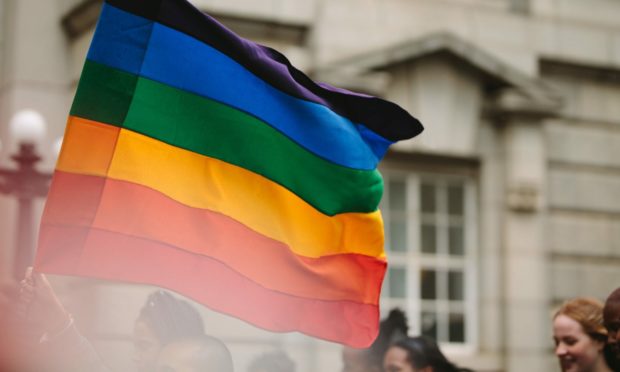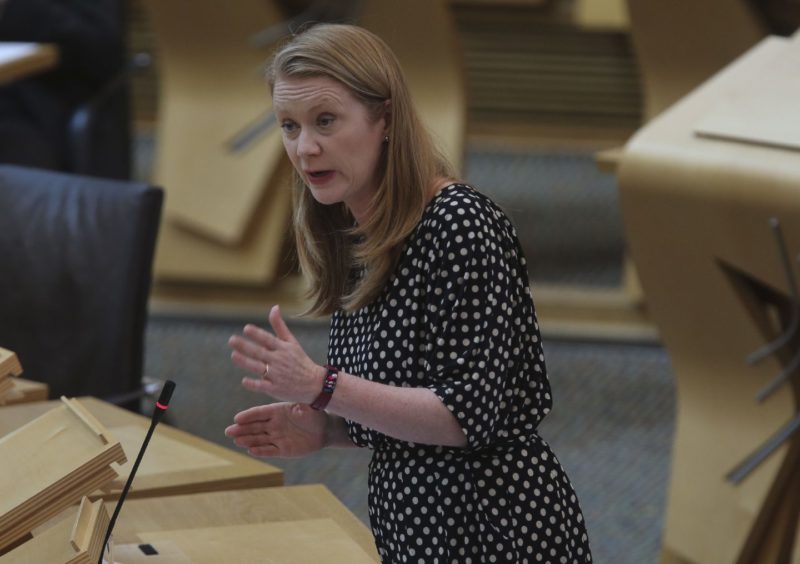The number of homophobic bullying incidents in Perthshire and Angus schools hit a four-year high last year.
Freedom of information (FOI) requests revealed that the number of such incidents recorded in both Perth and Kinross and Angus last year was double that of the previous year.
Perth and Kinross schools also recorded the highest number of bullying incidents related to homophobia in a four year period. For Angus, it was the highest in five years.
Perthshire figures
The figures obtained from Perth and Kinross Council show that during the 2020/21 school year, a total of 16 homophobic bullying incidents were recorded in schools.
This compares to just seven in the 2019/20 school year. The figures also show that there were ten in 2018/19 and eight in 2017/18.
Perth High School had the highest number of incidents, recording eight, with Crieff High School noting four.
The other four incidents were recorded in Blairgowrie High School, Perth Academy and Pitlochry High School but exact figures were not provided for these schools for data protection reasons.
Perth and Kinross Council said the incidents included bullying in relation to:
- Actual or perceived sexual orientation (e.g. homophobic, bi-phobic)
- Homophobia/sexual orientation
- Gender identity or trans identity
- Sexism and gender
Perth and Kinross Council has been approached for comment.
“No place” for homophobic bullying
Claire Mackenzie, co-chair of Perthshire Pride, said the rise in the figures could be a sign that more young people are reporting homophobic bullying, rather than an increase in such behaviour.
She said: “It’s obviously concerning but I do hope that the reason that they have doubled is that people are feeling a little bit more comfortable to report that this is wrong.
“People are looking at things and saying there is no need or place in the world for homophobic bullying and they are feeling more comfortable to report it.
There should be a complete zero tolerance.”
Claire Mackenzie, co-chair of Perthshire Pride
“The fact that we are more online and there is a culture at the moment of online trolling and bullying, that could definitely have a part to play.
“There should be a complete zero tolerance and there has been a much more inclusive culture happening in Perth.
“There are LGBT clubs in schools, like Perth High for example, and hopefully homophobic bullying will die out in the next few years.”
Angus figures
Figures from Angus Council show that, similar to Perth and Kinross, incidents of homophobic abuse in schools in 2020/21 were double the number recorded in the previous year.
A total of 18 incidents were recorded in the region’s schools last year. This compares to nine the previous year (2019/20).
In 2016/17 there were 13 incidents recorded by schools in the region. This fell to ten the next year (2017/18) and nine in both 2018/19 and 2019/20.
An Angus Council spokesperson said: “Our school leaders address incidents of bullying in accordance with council policies and local arrangements for each setting.
“Schools focus on prevention, and intervention where necessary. Our council-wide anti-bullying policy was updated in February 2020 and is available to view online.”
New guidance for schools
The figures come as the Scottish Government published new guidance to help schools better support transgender children and young people.
The guidance includes recommendations to not force a transgender pupil to use a specific toilet, to make social dancing events less gender-specific, and to use the name and pronouns requested by the child.
Also included is guidance on how to identify and tackle transphobic bullying, and it suggested primary school teachers use “books and resources which challenge gender stereotypes and include transgender people.”
Education Secretary Shirley-Anne Somerville said: “Pupils are happier and learn more at school when they feel safe, respected and included.
“We know transgender young people can face many issues in schools and that teachers and staff must have the confidence and skills to support their mental, physical and emotional health.
“This guidance outlines how schools can support transgender young people while ensuring that the rights of all pupils are fully respected. It provides schools with practical suggestions. The guidance is not prescriptive and does not promote transitioning.”

